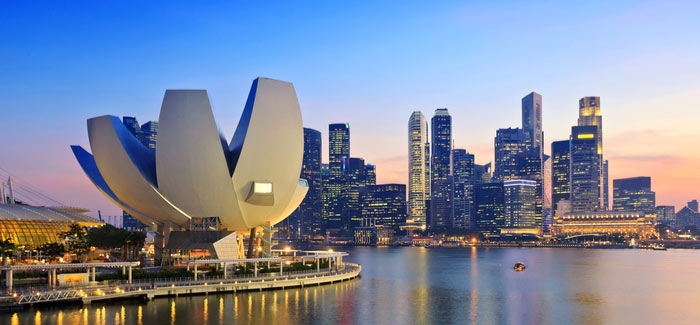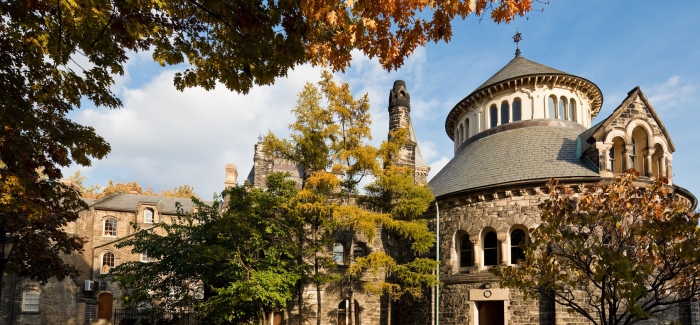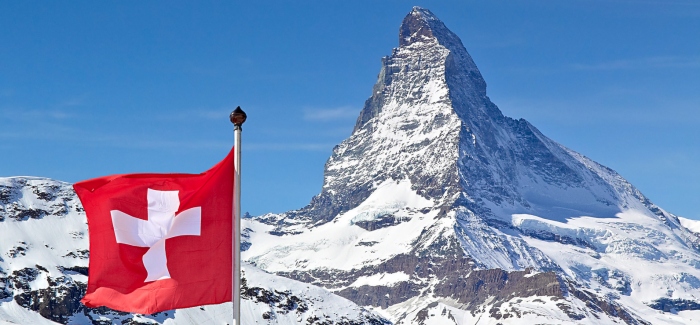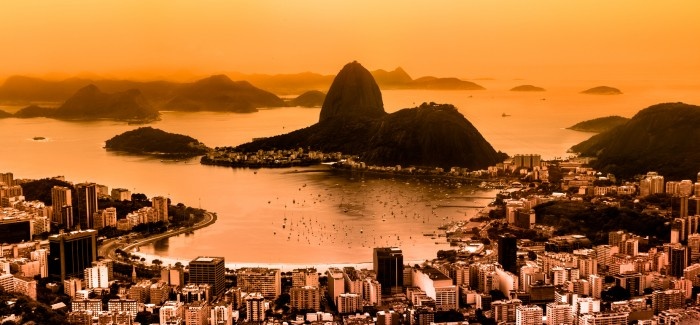Two of the most renowned universities in Russia in this year’s QS BRICS University Rankings, Lomonosov Moscow State University (MSU) and Novosibirsk State University (NSU) are bound to be at the top of your list if you want to study in Russia. Lomonosov ranks sixth this year, while Novosibirsk ranks 12th. They’re also both ranked well in the QS World University Rankings® 2019, with Lomonosov currently ranked 90th in the world, while Novosibirsk is in joint 244th place.
If you’re trying to decide between these two top Russian universities, read on for an overview of how they compare in factors such as the student community, subject strengths and tuition fees.
|
|
Lomonosov Moscow State University (MSU) |
Novosibirsk State University (NSU) |
|
QS World University Rankings® 2019 |
Ranked 79th in the world by academics and 83rd by employers 31st for faculty/student ratio
|
Ranked joint 244th in the world Ranked 292nd in the world by academics and 276th by employers
|
|
QS BRICS University Rankings 2019 |
Ranked sixth in BRICS Ranked sixth for academic reputation and seventh for employer reputation fourth for faculty/student ratio 10th for number of international students |
Ranked 12th in BRICS Ranked 28th for academic reputation and 23rd for employer reputation
18th for faculty/student ratio
|
|
Subject strengths* |
Ranked 56th in the world for arts & humanities Ranked joint 57th in the world for engineering & technology Joint 21st for natural sciences 68th for social sciences & management Joint 303rd for life sciences & medicine |
Ranked joint 375th in the world for arts & humanities Joint 182th for engineering & technology Joint 68th for natural sciences Joint 391st for social sciences & management |
|
Location |
Main campus is on Sparrow Hills, just outside the city center of Moscow. |
Located just outside the city center of Novosibirsk, Siberia, at Akademgorodok (‘Academic Town’), a research center. |
|
Student community |
47,000 students currently enrolled 4,000 (8.5 percent) of these are international |
7,000 students currently enrolled
|
|
English-taught programs |
Offers English-taught programs in seven schools/faculties. No English-taught bachelor’s degrees are available. |
Offers English-taught programs in six faculties/departments. No English-taught bachelor’s degrees are available. |
|
International tuition fees |
Varies – here are some examples:
|
|
*Based on the broad subject areas of the QS World University Rankings by Subject 2019.
QS World University Rankings® 2019
Lomonosov Moscow State University (MSU) is the leading institution at 90th, climbing from joint 95th last year, and also beats Novosibirsk State University (NSU) in most of the indicators used to compile the ranking. MSU is in the global top 100 for its reputation among graduate employers and academics, while both Russian universities achieve their highest score for the ratio of faculty to students, with MSU holding a large lead at 31st to Novosibirsk’s 85th.
The two top Russian universities both come 601+ for the citations per faculty indicator (a measure of research impact), and both are in the top 300 for percentage of international students, with MSU again in the lead by far at 173rd.
Subject strengths
While the world and BRICS rankings can be a helpful starting point when choosing between these two top universities in Russia, you’ll probably also want to see which institution performs best for your subject. Looking firstly at the broad subject areas of the QS World University Rankings by Subject 2019, Lomonosov is in the top 100 for every broad subject area, excluding life sciences & medicine, for which it ranks joint 303rd. Both Lomonosov and Novosibirsk achieve their highest score for natural sciences, with Lomonosov in joint 21st place internationally.
The table below shows how the two top Russian universities compare on a subject level.
|
Lomonosov Moscow State University (MSU) and Novosibirsk State University (NSU) in the QS World University Rankings by Subject 2019 |
||
|
|
Lomonosov Moscow State University |
Novosibirsk State University |
|
Archaeology |
51-100 |
-- |
|
Architecture/built environment |
151-200 |
-- |
|
Biological sciences |
101-150 |
351-400 |
|
Business & management |
151-200 |
-- |
|
Chemistry |
51-100 |
251-300 |
|
Communication & media studies |
151-200 |
-- |
|
Computer science & information systems |
48th |
301-350 |
|
Earth & marine sciences |
101-150 |
-- |
|
Economics & econometrics |
151-200 |
-- |
|
Education & training |
151-200 |
-- |
|
Engineering (chemical) |
-- |
151-200 |
|
Engineering (mechanical) |
51-100 |
251-300 |
|
English language & literature |
101-150 |
-- |
|
Environmental sciences |
201-250 |
-- |
|
Geography |
151-200 |
-- |
|
History |
51-100 |
101-150 |
|
Law |
51-100 |
151-200 |
|
Linguistics |
23rd |
201-250 |
|
Materials science |
101-150 |
301-350 |
|
Mathematics |
=34th |
101-150 |
|
Medicine |
251-300 |
-- |
|
Modern languages |
=33rd |
201-250 |
|
Natural sciences |
=21 |
=68 |
|
Pharmacy & pharmacology |
151-200 |
-- |
|
Philosophy |
51-100 |
151-200 |
|
Physics & astronomy |
26th |
51-100 |
|
Politics & international studies |
51-100 |
101-150 |
|
Psychology |
201-250 |
-- |
|
Social policy & administration |
-- |
-- |
|
Sociology |
151-200 |
251-300 |
|
Statistics & operational research |
101-150 |
-- |
|
Hospitality & leisure management |
-- |
-- |
Location
Another important factor to bear in mind when choosing between these two top Russian universities is where you’ll based. Both university’s cities were ranked in the latest QS Best Student Cities, with Moscow ranked 28th out of 100 cities in the 2018 edition, while Novosibirsk placed 96th. Moscow is perhaps a more familiar location, given it’s the capital of Russia and is located in the western (European) part of the country, but Novosibirsk is the unofficial capital of Siberia in Asian Russia and the third largest city in the country after Moscow and St Petersburg. As you’d expect from Siberia, Novosibirsk gets very cold, with temperatures averaging around minus 16°C in January. The cultural and economic center of Siberia, Novosibirsk is a fast-growing city and a transport hub. Novosibirsk State University itself is located in Akademgorodok (Academic Town), 30km from the city center, which is a world-famous research center and Russia’s answer to Silicon Valley. Novosibirsk is also a relatively affordable city for students, with much cheaper living costs than you’d find in Moscow (rent alone is 59 percent cheaper, according to Numbeo).
If you’d rather spend a bit more to live in Moscow and study at Lomonosov Moscow State University, you’re still likely to find the city’s living costs much lower than those in other European cities, such as London (where rent is 160 percent more expensive). Moscow also received plenty of praise in our student survey, with students commenting on the “many activities and events happening during the year…the city is made for youth and student life”, while another said: “You get to learn about different people and cultures”.
One of the most iconic capitals in the world, Moscow is full of fantastic Russian architecture, theaters, museums, galleries and parks to explore in your spare time. With more than 13.2 million residents, it’s considerably larger than Novosibirsk (which has a population of 1.6 million), so depending on your personality, you may find big city life either exciting or overwhelming.
Tuition fees & funding
Both of these top universities in Russia have similar tuition fees, which hover in the US$3,800-5,500 per year range for many courses. Even Lomonosov’s clinical medicine degree is only 325,000 rubles per year (~US$5,030) - a similar price to many other courses, despite medicine typically being one of the most expensive subjects. Fees are slightly higher for the English-taught graduate degrees at Novosibirsk State University but are still fairly low.
In terms of funding, the Russian government offers scholarships to help international students afford their studies, with 15,000 spots awarded in 2018. Russian government scholarships cover your full tuition for the duration of your program, as well as a maintenance allowance for the duration of your studies (typically about 1,630 rubles every month, which is roughly US$25). If available at your university, it will also include dormitory accommodation. To find out more and read about the steps to apply, you can check the Study in Russia website.
Lomonosov doesn’t currently offer its own scholarships. At Novosibirsk State University you may be able to study for an international program if you’re from a partner university or one that takes part in the Erasmus + exchange program.
You can browse more scholarships to study in Russia in our dedicated list here.
This article was originally published in November, 2017. It was updated in April 2019.
Which of these top universities in Russia gets your vote? Let us know in the comments below!







